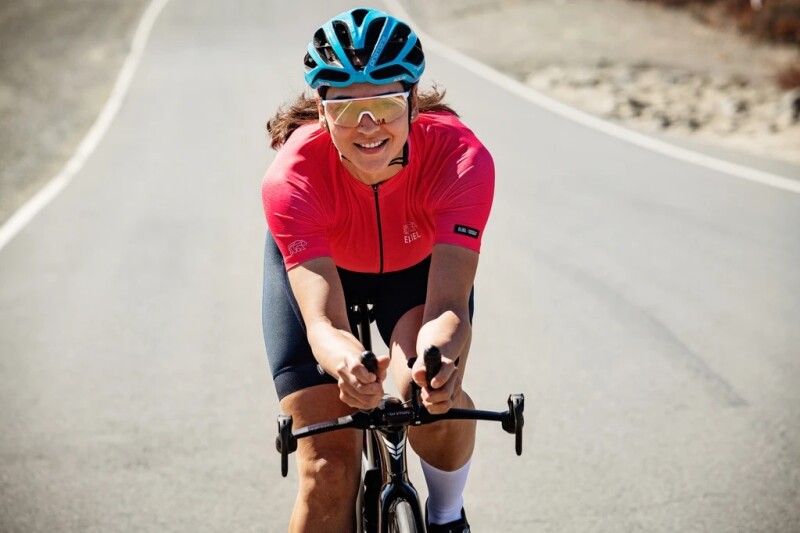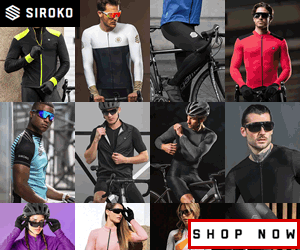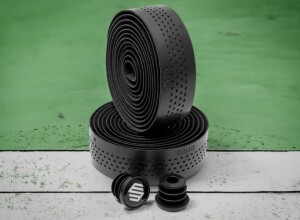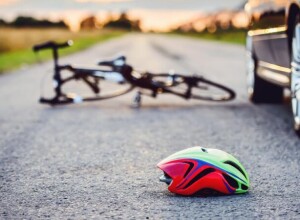Felt Bicycles (United States) - Press Release: There’s never been a better time to be a cyclist, triathlete, or biking enthusiast. Whether you’re pursuing a healthier lifestyle, eager to satisfy your competitive nature with some racing or fast group rides, or just looking to rekindle that joy and wonder you felt as a child aboard your very first bike, now is the time to ride. Interest in cycling has surged in the past few years, and this is especially true amongst women. In fact, women make up the fastest-growing demographic of cycling enthusiasts across most regions around the globe. Many bike shops even carry models from various manufacturers that claim to be “women’s-specific.” We believe that there’s a perfect bike out there for everyone. But how does one go about finding it?
We’re going to break down everything you need to know about women’s bikes. This includes the unique design philosophies that different bike brands utilize to provide women with the best cycling experience; whether or not you should seek out a women’s-specific bike; the different categories of bikes and the riding environments for which each one is designed; and the key attributes that cyclists of all genders should look for when shopping for a new bike.
What makes a bike women's-specific?
One of the most exciting aspects of the bicycle industry is that it has a lengthy track record of creating unique designs, utilizing new frame materials, and experimenting with new technologies, all in an effort to improve the cycling experience for different types of riders. This includes refining a bike’s characteristics to, say, improve its comfort on rough pavement, or its handling across twisty roads. Likewise, bicycle manufacturers regularly tinker with a bike’s attributes like geometry (the lengths, proportions, and angles of a bicycle frame) and the sizes of its components (such as handlebars, seatposts, and crank arms) in order to accommodate the needs of a rider’s height, weight, limb lengths, and flexibility. All of these sizing elements working together is what the bicycle industry collectively calls a cyclist’s “fit.”
For many years—and still to this day—many bike brands design separate bikes for men and women. This is because, in order to cater to as many riders as possible, bicycle manufacturers often lean into the notion that, in the most general of concepts, men have longer torsos while women have longer legs; men produce more power in their pedaling efforts than women; and men’s and women’s bodies have different weight distributions when seated on a bike. As such, some bike brands produce models with different geometries for men and women. Some outfit the same frame with components (also known as “touch points”) like handlebars, stems, and seatposts of different lengths. Some will just add a saddle designed for women to an existing “men’s” bike. Many will simply paint a bike with brighter, lighter, or pastel colors and call it a “women’s” or even “women’s-specific” model.
In short, the term “women’s-specific” is ambiguous when it comes to bikes, with different brands using it to describe different models and their unique approaches to addressing the needs of women cyclists. Just because a bike is labeled “women’s-specific” doesn’t necessarily mean it’s right for you.
Does felt design women's-specific bikes?
Ultimately, every bike brand has its own philosophy when it comes to suiting various cyclists’ needs, in relation to fit and performance. Let’s discuss where our philosophy comes from.
Our roots are in competitive racing, and it’s where we continue to draw inspiration for creating all of our bike models. Our very first bike was a custom racing machine for the legendary triathlete, Paula Newby-Fraser, who went on to win a staggering eight world championships during her illustrious career. Over the 30 years since creating our first bike for Paula, we’ve been fortunate to create bikes for many more of the world’s fastest women. These include other triathlon world champions like Michellie Jones, Mirinda “Rinny” Carfrae, and Daniela Ryf; track stars like Sarah Hammer; three-time Olympic time trial champ Sarah Hammer; and road cycling champions like Chloe Dygert. We’ve also supported the famed women’s TWENTY24 Pro Cycling team for over a decade, and we’re proud sponsors of the Rally Cycling pro team, too, which includes both their women’s and men’s contingents.
Want to know some of the most significant things we’ve learned during our long history of crafting bikes for the world’s fastest cyclists? Your bike doesn’t know your gender, and the human body comes in a wonderful variety of diverse sizes and shapes. Not all women have long legs and short torsos, just as not all men have longer torsos and shorter legs. There are tall women and short men. And there are women who are stronger, faster, and fitter than their male counterparts.
What are the best types of bikes for women?
We believe that no matter the gender with which they identify, every cyclist wants a bike that is fast, reliable, and comfortable. Riding bikes is fun, and it’s a terrific activity to support a healthy lifestyle, so it can be whatever you want to be. Whether you’re riding on the road, dirt trails, bike paths, or anywhere else, there are several types of bikes to help support your love of cycling. Let’s go into a bit more detail about what makes various types of bikes unique, and what each type is designed to help you accomplish. After that, we’ll discuss what to look for in each type of bike, and then provide some information to help you determine the best size and fit for you.
Women's road bikes:
Road bikes are designed to be ridden on paved surfaces and to provide the rider with a fast, fun, and thrilling experience over long distances. They’re often characterized by their narrow, slick tires and drop-style handlebars, which provide the cyclist with several different hand positions to use depending on their current riding situation (for example, some cyclists prefer to place their hands on the “top” section when cruising slowly up a climb, and place their hands in the curved, “drop” sections for better control when descending). Road bikes are often divided into subcategories to reflect their intended use, which include the following.
Gravel bikes:
Gravel is a category of bikes that has grown by leaps and bounds in recent years. As its name implies, “gravel” bikes are designed to be ridden on surfaces like gravel, dirt, sand, and anything else that’s unpaved. But the beauty of a well-designed gravel bike is that it mirrors the common design elements (such as a drop-style handlebar) and performance characteristics of a road bike, meaning that it handles, pedals, and puts the rider in a familiar road bike-like riding position. As such, it can be ridden just as easily on the road, albeit with a slight trade-off in overall speed. This is because the distinguishing feature of a gravel bike is its ability to utilize tires much wider—and with tread patterns designed for traction on gravel and dirt—than slick, skinny road tires.
Triathlon bikes:
Triathlon bikes are some of the most unique models out there. They’re purpose-built for triathlon racing, which means that they’re ideally suited for those planning on immersing themselves in the triathlon lifestyle, which includes training for and participating in a bunch of triathlon races. They’re visually distinct amongst other bikes thanks to their unique handlebar configuration, which includes a set of aerobars. These are the handlebars that stick straight out in front of the bike and allow for an incredibly aerodynamic riding position (perfect for maximizing speed and pedaling efficiency in long triathlon races).
Mountain bikes:
Mountain bikes are one of the most popular types of bikes, and they’re largely defined by two characteristics: the environment in which they’re intended to be ridden, and the way in which the rider interacts with it—in this case, with a flat-style handlebar. Mountain bikes typically have wider and knobbier tires than road bikes, city bikes, or beach cruisers. This is because mountain bikes are intended to be ridden off-road, on dirt trails. And because off-road riding demands a bit more control in order for the rider to handle the technical terrain of dirt, rocks, and other natural debris, mountain bikes have a flat handlebar. This offers only one dedicated hand position for the rider, but it provides the greatest amount of control and steering confidence. Depending on the bike’s manufacturer and intended use, mountain bikes will often have some sort of front or rear suspension to make the ride more comfortable off-road.
Hybrid bikes:
One final, popular category of bikes are “hybrid” models. Sometimes, this term is used interchangeably with “city bikes.” These refer to bikes that can be ridden on the road or paved bike paths—just like road bikes—but their distinguishing feature is a flat-style handlebar, which provides a more upright riding position and enhanced steering control (like a mountain bike). Hybrid bikes offer plenty of pedaling efficiency, and are ideally suited for anyone looking for the added control, confidence, and comfort that a more upright riding position offers. Sometimes, bike shops or online retailers will also refer to hybrid bikes as “fitness” bikes, too.
How do i pick the best women's bike size?
When it comes to finding the right size bike, it’s important to familiarize yourself with the frame sizing scale most often utilized by bike brands. This involves a numerical measurement expressed in centimeters that references the frame’s seat tube length (for example, 48cm, 50cm, 52cm, etc.). Back in the early days of bicycle manufacturing, this measurement—which loosely coincides with a rider’s inseam length—was seen as the gold standard of sizing an individual to a bike frame. Times have changed, but this system still exists as a nod to past traditions. In actuality, today, a size “52cm” frame from one brand may have an actual seat tube measurement of, say, 48cm, while a “52cm” frame from another brand could have an actual seat tube measurement of 50cm.
This is because bicycle design has evolved to commonly feature shorter seat tube lengths, more acute angles between the top tube and down tube, and other frame sizing elements that create a better riding bike. Also, note that some bike brands will also present their bike lineup with an equivalent “t-shirt”-style sizing scale (for example, Small, Medium, Large, etc.), in addition to traditional frame sizes, in order to help customers make a more informed decision.
Confusing? Yes, it can be. That’s why we always recommend working with a reputable, local bike shop. Not only will you be supporting a local business, you’ll also be able to work with a team of people who are experts at getting riders onto the proper sized bike. They’ll be able to discuss with you, in person, your cycling goals, as well as assess your body’s measurements, flexibility, and comfort while riding.
How can i make my bike fit better?
Once you’ve got your new bike, have fun and ride it as much as you can. But also be mindful of how your body is interacting with it. Making sure your bike fit is optimal—and that you’re both comfortable and confident when riding it—is key to a happy cycling lifestyle. While your local bike shop should have worked with you to make sure you’re on the correct size frame and all of the components are adjusted to your body’s needs, sometimes changes can be required.
We strongly encourage all cyclists to consult with an expert bike fitter. While your local bike shop should be able to handle most anything relating to your bike fit, sometimes a little extra help is needed. As you ride your bike more often, you’ll get stronger and fitter, and your flexibility may change. As such, you may benefit from slight changes in things like saddle height, the position of your cleats on your cycling shoes, and more. There are several experienced and reputable bike fitters out there, who are dedicated experts in all things related specifically to bike fit. Consult with your local bike shop or local cycling clubs for recommendations on finding a reputable fitter in your area. Some changes to your bike that a fitter may recommend, and even some things you could try yourself, involve swapping out components.
What women's bike parts are key for the best ride?
Your saddle is the most important component on your bike that relates to your comfort. If you’re not sitting comfortably, then nothing else about your ride matters. There are countless saddle designs out there, including ones designed specifically for women’s anatomy. Every cyclist should make it their mission to seek out the most comfortable saddle, and that starts with your local bike shop or fit expert. Oftentimes, they will work with their clients by providing some sample saddles to try—with various widths, outlines, curvatures, and padding density—in order for them to find the perfect perch.
Other components that can be easily swapped out include seatposts, which come in a variety of lengths to accommodate cyclists with long or short legs. Likewise, handlebar makers produce a variety of models with varying widths, thicknesses, and curves. Your bike’s stem, too, is a key component in regards to bike fit, as well as how your bike handles. A longer stem, for example, is generally best suited for someone with a longer torso or arm length, or those looking to ride in a lower position for added aerodynamic efficiency or a unique steering feel. Finally, crankarm length is key to bike fit, and is something that can be easily swapped out for, say, a shorter version to better suit someone with shorter legs—but we recommend consulting with a fit expert who can evaluate your pedaling style in person in order to find your optimal crankarm length.
Conclusion:
No matter what you’re seeking in your cycling experience, be sure to find a bike that speaks to your goals—and especially one that you’ll fall in love with and want to spend hours and hours riding. Start by assessing your riding environment, and familiarize yourself with the different types of bikes available. Likewise, make sure you’re adapting your bike to fit your body, and never the other way around. Cycling is about joy and passion, after all, so get out there and have fun.




























Interested? Submit your enquiry using the form below:
Only available for registered users. Sign In to your account or register here.